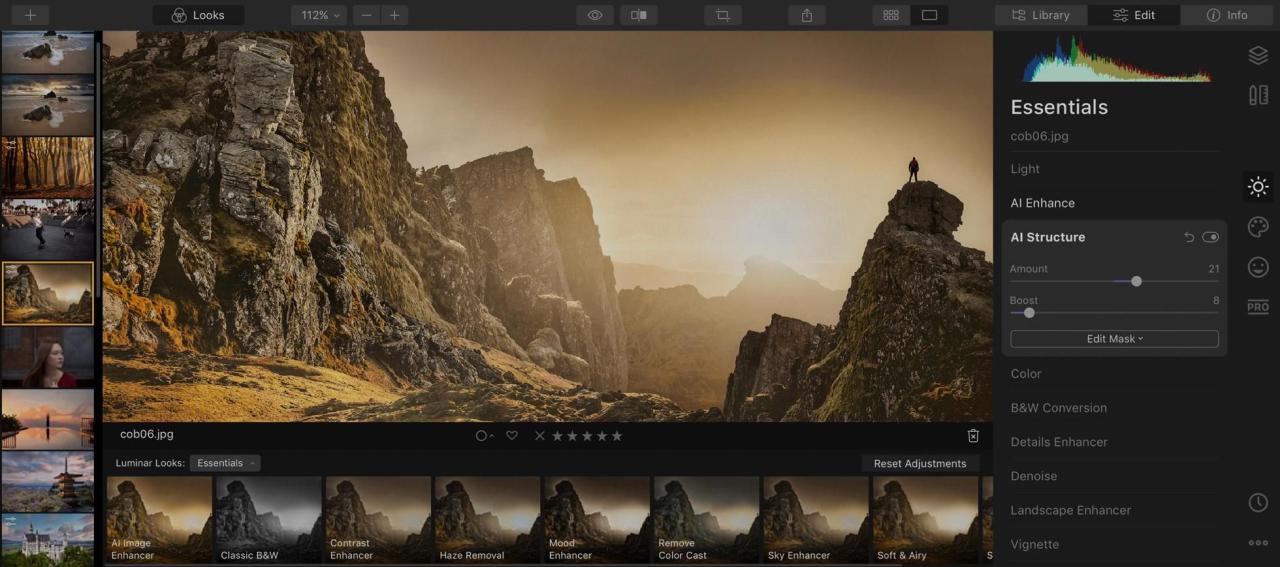In today’s digital era, images are more than just visual elements—they are powerful storytelling tools. Whether you’re a professional photographer, a social media influencer, or a digital marketer, the ability to transform a simple snapshot into a compelling narrative is crucial. Cutting-edge photo editors have revolutionized the way we work with visuals, allowing creators to push the boundaries of art and communication. This comprehensive article delves into the evolution of photo editing software, explores the innovative features of modern platforms, and demonstrates how these tools empower visual storytelling. Along the way, we will provide expert tips, discuss real-world applications, and look ahead at future trends that promise to reshape the creative landscape.
With an emphasis on SEO and maximizing Google AdSense potential, this guide is designed not only to inform but also to engage readers by highlighting the transformative impact of advanced photo editors.
The Evolution of Photo Editing Software
The journey of photo editing began long before the advent of digital tools. Early photography relied on analog methods, where film and darkrooms were the epicenters of creativity. Over time, technological advancements have shifted the paradigm, turning photo editing into a digital art form characterized by precision, speed, and endless creative possibilities.
A. Early Beginnings in Photo Editing
- A. Analog Techniques: Before digital tools, photographers used darkroom techniques such as dodging and burning to manipulate exposure and contrast. These manual processes required a deep understanding of light and shadow, along with significant technical expertise.
- B. Transition to Digital: The emergence of digital cameras in the late 20th century marked a turning point. Early digital editors provided basic tools like cropping, exposure adjustment, and color correction, setting the stage for more sophisticated software.
- C. Foundational Software: Programs like Adobe Photoshop and Corel PaintShop Pro were among the first to offer extensive image manipulation capabilities, paving the way for a new generation of photo editors.
B. The Rise of Modern Digital Editing Platforms
Modern photo editing software represents a significant leap from its predecessors. Leveraging advancements in computing power and artificial intelligence (AI), today’s platforms offer a vast array of features that cater to both amateur enthusiasts and professional artists.
- A. Speed and Efficiency: Enhanced processing power allows for real-time editing, enabling users to see changes instantly.
- B. Advanced Algorithms: Integration of AI and machine learning (ML) has introduced features like auto-enhancement, smart object recognition, and content-aware fill, which dramatically simplify complex editing tasks.
- C. Cloud-Based Solutions: The move to cloud storage and editing means that creators can work on projects across multiple devices, facilitating seamless collaboration and flexibility.
Core Features of Cutting-Edge Photo Editors
Modern photo editors come equipped with an array of tools that offer both technical precision and creative freedom. Here, we detail the primary features that have redefined the landscape of digital image manipulation.
A. Advanced Image Manipulation
Cutting-edge photo editors offer a suite of advanced tools that empower users to transform images with precision and creativity.
- A. Layer Management: Layers are fundamental to non-destructive editing. By isolating different elements of an image on separate layers, users can make adjustments without affecting the original photo.
- B. Masking and Compositing: Masking tools allow for the selective editing of specific image areas, enabling the seamless merging of multiple images into a single composition.
- C. High Dynamic Range (HDR) Editing: HDR capabilities enable the merging of multiple exposures, producing images with superior detail in both shadows and highlights—a vital feature for challenging lighting conditions.
B. AI and Machine Learning Integration
The integration of AI and ML into photo editing has streamlined many traditional processes, making high-quality editing accessible to everyone.
- A. Auto-Enhancement Tools: These features analyze an image and make intelligent adjustments to brightness, contrast, color balance, and sharpness automatically.
- B. Smart Object Recognition: AI-driven tools can identify objects within an image, allowing for targeted edits that maintain overall coherence.
- C. Content-Aware Fill: This intelligent feature removes unwanted elements from an image and fills in the background seamlessly, reducing the need for manual retouching.
C. Creative Filters and Effects
Creative filters and effects are essential for imparting a unique artistic vision to images.
- A. Artistic Filters: These filters simulate traditional art techniques—such as watercolor, oil painting, and sketching—enabling users to transform photos into digital artworks.
- B. Color Grading Tools: Advanced color grading tools allow for fine-tuning of the color palette, setting the mood and tone of an image in alignment with the narrative.
- C. Dynamic Effects: Effects like lens flares, bokeh, and motion blur introduce movement and depth, making static images more dynamic and engaging.
D. User-Friendly Interfaces and Workflow Optimization
The usability of photo editing software significantly impacts the creative process.
- A. Customizable Workspaces: Modern editors offer flexible interfaces that let users tailor their workspace, ensuring that frequently used tools and panels are readily accessible.
- B. Keyboard Shortcuts and Toolbars: Customizable shortcuts and streamlined toolbars enhance efficiency, enabling faster execution of complex tasks.
- C. Cloud Integration: Cloud-based platforms support real-time collaboration, allowing multiple users to work on the same project simultaneously and access their work from anywhere.
Empowering Visual Storytelling Through Photo Editors
Visual storytelling is about more than just presenting an image—it’s about conveying emotion, context, and narrative. Cutting-edge photo editors provide the tools necessary to craft images that speak volumes.
A. Enhancing Emotional Impact
The emotional resonance of an image is crucial in storytelling. Advanced editing techniques can evoke powerful emotions by manipulating various visual elements.
- A. Color Psychology: Adjusting the color palette of an image can influence the viewer’s emotional response. Warm hues (reds, oranges, yellows) tend to evoke feelings of warmth and passion, while cool hues (blues, greens, purples) can create a sense of calm or melancholy.
- B. Lighting and Shadows: Strategic adjustments to lighting and shadows add depth and drama. Highlighting specific areas and subtly shading others can direct the viewer’s focus, emphasizing key elements of the story.
- C. Texture and Detail Enhancement: Enhancing textures and fine details not only increases the visual appeal of an image but also adds a tactile dimension that can make the story more immersive.
B. Creating a Consistent Visual Theme
Consistency is key in visual storytelling. Maintaining a uniform aesthetic across a series of images reinforces the narrative and enhances brand identity.
- A. Batch Editing: This feature allows for simultaneous editing of multiple images, ensuring that adjustments are consistently applied across an entire project.
- B. Custom Presets and Templates: Creating and saving custom presets helps maintain a consistent look and feel, making it easier to replicate a specific style in future projects.
- C. Consistent Filters: Utilizing a set of well-chosen filters across various images can help develop a recognizable visual signature, essential for building a personal or brand identity.
C. Seamless Integration with Multimedia Platforms
The modern creative process is often multi-disciplinary. Advanced photo editors facilitate seamless integration with other digital media, broadening the scope of visual storytelling.
- A. Social Media Compatibility: Many photo editors offer direct sharing options to platforms like Instagram, Facebook, and Pinterest. This integration ensures that your visuals are optimized for various social media formats.
- B. Video and Animation Integration: Combining still images with video and animation elements creates dynamic multimedia narratives. Advanced photo editors often work in tandem with video editing software, enabling creators to produce cohesive, multi-layered stories.
- C. Mobile and Web Accessibility: Cloud-based editing tools allow you to work on projects from virtually any device, ensuring that creativity is not limited by hardware or location.
Impact on Various Creative Industries
The rise of cutting-edge photo editors has had a transformative effect on numerous creative industries. Here’s how advanced image manipulation is reshaping diverse fields:
A. Advertising and Digital Marketing
In the competitive world of advertising, visuals are paramount. High-quality, edited images help brands stand out and effectively communicate their messages.
- A. Brand Identity: Professionally edited images are crucial for building and reinforcing a brand’s identity. Consistent, high-quality visuals contribute to a strong and memorable brand presence.
- B. Enhanced Engagement: Striking visuals capture the attention of audiences, increasing engagement on social media and other digital platforms.
- C. Story-Driven Campaigns: A well-crafted visual narrative can evoke emotions and prompt action, making it a powerful tool in advertising and digital marketing campaigns.
B. Fashion and Lifestyle
The fashion industry thrives on visuals. Advanced photo editing is instrumental in creating images that convey style, elegance, and the latest trends.
- A. Editorial Excellence: Fashion magazines and online publications rely on meticulously edited images to showcase trends and set aesthetic standards.
- B. Influencer Content: Fashion influencers and lifestyle bloggers use high-quality photo edits to build their online presence and engage with followers.
- C. E-Commerce Optimization: For online retailers, product images must be both attractive and informative. Cutting-edge photo editors ensure that every detail of a product is highlighted, driving sales and enhancing customer experience.
C. Journalism and Documentary Photography
For photojournalists and documentary photographers, the integrity of an image is paramount. Advanced editing tools enable professionals to enhance their photos while adhering to strict ethical standards.
- A. Clarity in Storytelling: Enhanced image clarity helps in conveying the gravity of news events, making complex stories more accessible to the public.
- B. Ethical Editing Practices: While enhancements are necessary, it is critical to maintain the authenticity of the image. Ethical editing practices ensure that the truth remains unaltered.
- C. Impactful Narratives: Well-edited images can evoke powerful emotional responses and drive social change by highlighting critical issues and stories.
D. Digital Art and Creative Expression
The world of digital art has been fundamentally transformed by advanced photo editing software. Artists now have the freedom to blend photography with digital manipulation, creating innovative works that defy traditional artistic boundaries.
- A. Mixed Media Creations: Photo editors allow artists to combine elements of photography, digital painting, and graphic design, resulting in unique mixed-media artworks.
- B. Experimental Techniques: Advanced tools enable artists to experiment with surreal effects, abstract compositions, and creative distortions, pushing the envelope of visual expression.
- C. Collaborative Art Projects: Cloud-based editing and real-time collaboration have opened up new avenues for artistic partnerships, allowing artists from different disciplines to create cohesive, impactful works.
Advanced Techniques and Expert Tips
Achieving mastery in photo editing requires both technical proficiency and artistic vision. The following techniques and tips will help you elevate your work and harness the full potential of cutting-edge photo editors.
A. Embracing Non-Destructive Editing
Non-destructive editing is a core principle that allows you to modify images without permanently altering the original file.
- A. Adjustment Layers: Use adjustment layers for changes in brightness, contrast, and color balance. This allows for easy revisions and fine-tuning.
- B. Smart Objects: Convert layers to smart objects before applying filters or transformations. This preserves the image quality and allows for reversible edits.
- C. Effective Masking: Utilize masking techniques to isolate and enhance specific areas of an image. Masks provide precision without compromising the overall integrity of the photo.
B. Mastering Color Correction and Grading
Color is a critical element in visual storytelling. Proper color correction and grading can set the mood and bring out the intended emotion.
- A. White Balance Adjustments: Ensure that the colors in your image are true to life by adjusting the white balance. This step is essential for achieving natural-looking tones.
- B. Saturation and Contrast Tweaks: Fine-tune saturation and contrast to emphasize details and create a dynamic visual impact.
- C. Use of Gradient Maps and LUTs: Experiment with gradient maps and Look-Up Tables (LUTs) to apply custom color grades that reinforce your visual narrative.
C. Retouching and Restoration Techniques
Retouching is not just about removing imperfections; it’s about enhancing the image to support your story.
- A. Clone Stamp and Healing Brushes: Use these tools to remove unwanted objects or blemishes while preserving the natural texture of the image.
- B. Frequency Separation: Particularly useful for portrait editing, this technique separates texture from color, enabling smooth and natural-looking skin corrections.
- C. Restoration Tools: Revitalize old or damaged photographs by using digital restoration techniques to repair fading, tears, or other imperfections.
D. Experimenting with Special Effects
Innovative effects can transform your images, adding layers of meaning and artistic flair.
- A. 3D Effects and Layer Styles: Add depth and dimension to flat images by experimenting with 3D effects and creative layer styles.
- B. Filters and Overlays: Apply creative filters and overlays to introduce unique textures, lighting effects, or artistic moods.
- C. Motion Blur and Dynamic Effects: Incorporate motion blur or dynamic effects to convey movement, enhancing the narrative quality of your visual story.
Overcoming Challenges in Photo Editing
While advanced photo editing tools offer limitless creative possibilities, they also present challenges that need careful navigation.
A. Avoiding Over-Editing
It can be tempting to push effects to the extreme. However, maintaining a balance between enhancement and authenticity is key.
- A. Preserve Natural Elements: Strive to enhance the image while keeping the original essence intact.
- B. Regularly Compare with the Original: Periodically revert to the unedited version to ensure you haven’t lost crucial details.
- C. Seek Constructive Feedback: Peer reviews and feedback can help you strike the right balance and avoid common pitfalls.
B. Staying Updated with Rapid Technological Advances
The pace of technological change in photo editing is relentless. To remain competitive, continuous learning is essential.
- A. Engage in Ongoing Education: Follow industry blogs, attend webinars, and participate in online courses to stay abreast of the latest tools and trends.
- B. Experiment with New Features: Regularly test new features and updates in your photo editing software to discover innovative ways to enhance your work.
- C. Invest in Quality Hardware and Software: Keeping your tools updated is crucial to take full advantage of advanced editing capabilities.
C. Balancing Creativity with Technical Mastery
Successful visual storytelling requires both artistic intuition and technical proficiency.
- A. Practice Regularly: Dedicate time to experimenting with different techniques and styles to refine your skills.
- B. Develop a Signature Style: Over time, your editing process should reflect a unique style that distinguishes your work.
- C. Set Clear Objectives: Define the narrative you wish to convey with each project. A clear vision helps in making precise and impactful editing decisions.
Future Trends in Photo Editing and Visual Storytelling
The future of photo editing is brimming with exciting possibilities. Emerging trends are set to further transform the creative landscape, providing new tools and techniques that push the boundaries of visual storytelling.
A. AI-Driven Personalization
Future photo editing platforms will likely leverage AI even further, offering personalized editing suggestions and custom presets based on your unique style and preferences.
B. Real-Time Collaborative Editing
Cloud-based solutions are paving the way for real-time collaboration, allowing multiple creatives to work on a single project simultaneously, no matter where they are located.
C. Integration of Virtual and Augmented Reality
VR and AR technologies will soon blend with photo editing, enabling the creation of immersive, interactive visuals that allow audiences to engage with images in entirely new ways.
D. Enhanced Mobile Editing Capabilities
As mobile technology advances, expect to see mobile photo editors that offer the same level of sophistication as desktop platforms, making professional-grade editing accessible on the go.
Conclusion
The evolution of photo editing has transformed the art of visual storytelling. Cutting-edge photo editors empower creators to craft images that are not only visually stunning but also deeply emotive and narratively rich. From advanced image manipulation and AI-driven enhancements to seamless integration with multimedia platforms, these tools are revolutionizing how we communicate through visuals.
By mastering both the technical and creative aspects of photo editing, professionals across industries—from advertising and fashion to journalism and digital art—can elevate their work and connect with audiences on a profound level. Embracing innovative techniques and staying updated with emerging trends will ensure that your visual stories remain captivating and relevant in an ever-changing digital landscape.
In a world where a single image can evoke countless emotions and convey intricate stories, the role of cutting-edge photo editors is more critical than ever. As technology continues to evolve, so too will the possibilities for visual storytelling, offering creators new ways to inspire, engage, and transform the way we see the world.













